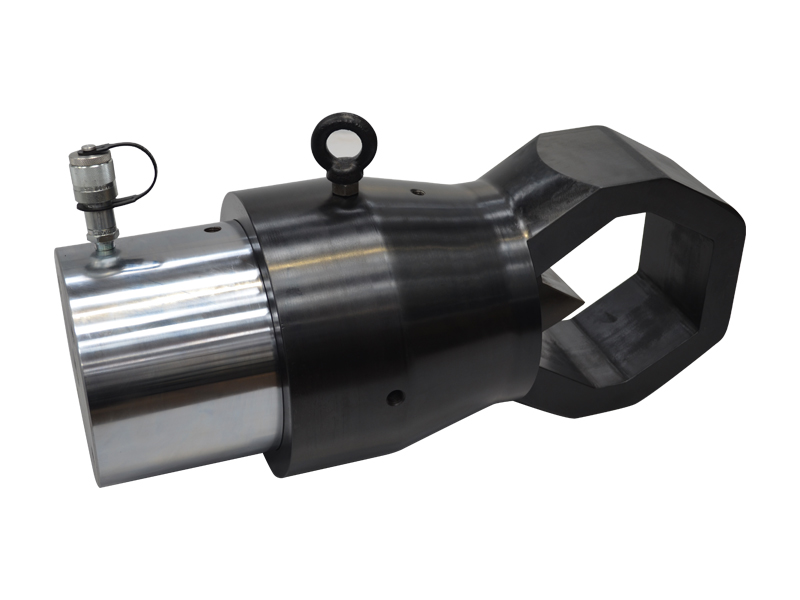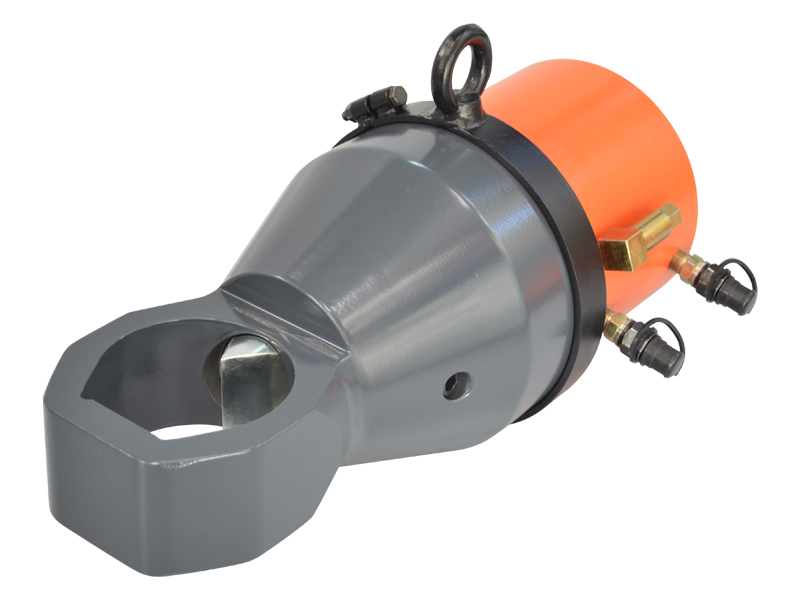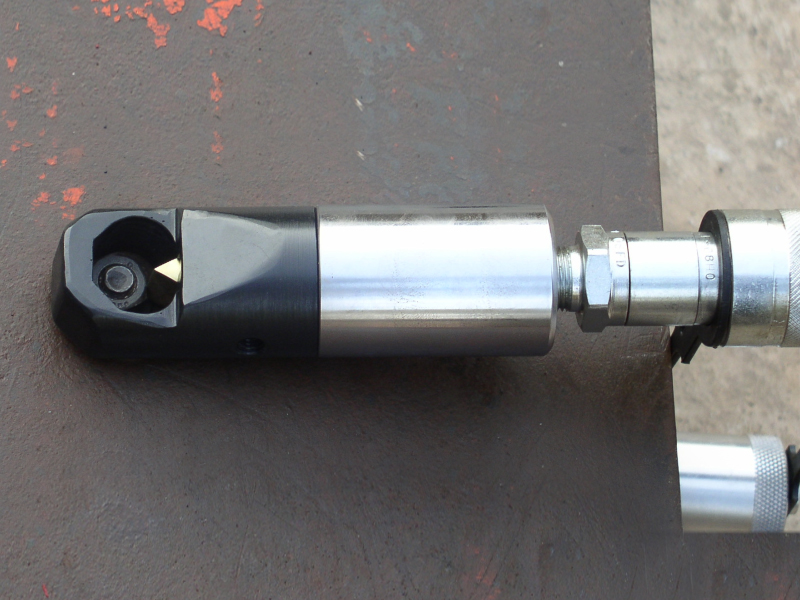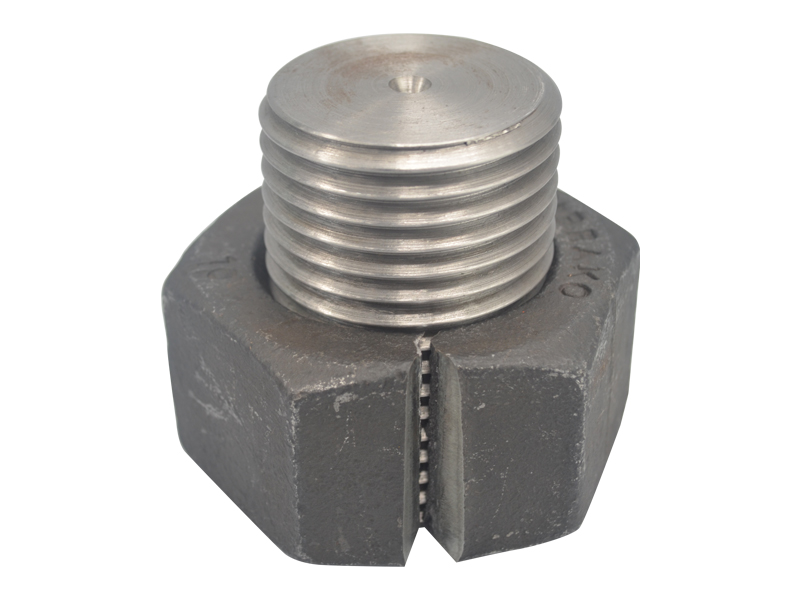- Hydraulic Tank Jack
- Pancake Jacks Plain Ram
- Pancake Jacks Threaded Ram
- Flat Jacks Single Acting
- Low Height Jacks Single Acting
- General Purpose Jacks Single Acting
- General Purpose Jacks Threaded Ram
- General Purpose Jacks Double Acting
- General Purpose Threaded Ram Double acting
- Alluminium General Purpose Threaded Ram
- Alluminium General Purpose Plain Ram
- Hollow Ram Jacks Single Acting
- Hollow Ram Jacks Double Acting
- Hydraulic Hand Pumps Aluminium
Nut Splitters Suppliers
Nut Splitters Suppliers
Nut splitters are a tool that can be used to remove damaged or corroded nuts from bolts without damaging the bolt threads. They are beneficial when working with rusted or seized nuts that cannot be removed by conventional methods such as wrenches, sockets, or pliers.
Nut splitters consist of a hardened steel chisel driven into the nut by a hydraulic or manual force, creating a crack that splits the nut in half. The nut splitter can then be removed, and the nut halves can be taken off the bolt quickly.
Different types and sizes of nut splitters are available for various applications and bolt sizes. Some nut splitters are designed to fit into tight spaces or to work with flange nuts. Some nut splitters have adjustable jaws that can accommodate various nut widths. Some nut splitters have a built-in pump that provides hydraulic pressure to the chisel, while others require an external pump or a manual screw.
Orione Hydropower is a leading manufacturer and supplier of Nut splitters in Bihar, India. Our high-end designs are made of metal to prevent corrosion and withstand wear. As a trusted manufacturer in Bihar, we use only the finest quality materials to deliver the best options to our customers. Please browse our website and place your order according to your preferences.
Features of Nut Splitters
Different nut splitters are available in the market, each with features and advantages. Here are some of the standard features of nut splitters in list form:
Size
Nut splitters come in different sizes to fit various sizes of nuts. Some nut splitters have adjustable jaws that accommodate a range of nut sizes, while others have fixed jaws designed for specific nut sizes. The nut splitter size should match the nut size to ensure a proper fit and a clean cut.
Material
Nut splitters are usually made of hardened steel or alloy steel, which are durable and resistant to wear and tear. Some nut splitters have a coating or a finish that protects them from corrosion and rust. The material of the nut splitter should be strong enough to withstand the cutting force and the friction from the nut.
Shape
Nut splitters have different shapes depending on their design and function. Some nut splitters have a square shape that allows them to fit into tight spaces, while others have a curved shape that provides more leverage and stability. Some nut splitters have a single cutting edge, while others have a double cutting edge that can cut both sides of the nut at once. The shape of the nut splitter should suit the application and the user's preference.
Handle
Nut splitters have different handles that provide grip and comfort for the user. Some nut splitters have a manual handle that requires the user to apply pressure by hand, while others have a hydraulic handle that uses hydraulic pressure to generate the cutting force. Some nut splitters have a ratchet handle that allows the user to tighten or loosen the jaws incrementally. In contrast, others have a screw handle that requires continuous rotation to adjust the jaws. The handle of the nut splitter should be easy to use and ergonomic for the user.
Safety
Nut splitters are designed with safety features that prevent injuries and accidents. Some nut splitters have a safety guard that covers the cutting edge and protects the user from flying debris and sparks. Some nut splitters have a safety lock that prevents accidental activation or release of the jaws. Some nut splitters have a safety valve that regulates the hydraulic pressure and prevents overloading or bursting. The safety features of the nut splitter should be reliable and effective.
Applications of Nut Splitters
Nut splitters can be used to remove nuts seized, rusted, or damaged by other methods. They work by applying hydraulic pressure to a cutting blade that splits the nut along its length, allowing it to be removed from the bolt or screw. Nut splitters are often used when other methods of nut removal, such as wrenches, sockets, or impact tools, are ineffective, unsafe, or impractical.
Different nut splitters are available, depending on the size, shape, and material of the nuts to be removed. Some common types are:
Hydraulic nut splitters
These are the most potent and versatile type of nut splitters. They consist of a hydraulic pump, a hose, and a nut splitter head that can be attached to different sizes and models of nuts. The hydraulic pump can be operated manually or electrically, providing a high force to the cutting blade. Hydraulic nut splitters can be used on various nuts, from small to large and from mild steel to stainless steel. They are ideal for industrial applications requiring speed, accuracy, and safety.
Mechanical nut splitters
These are simpler and cheaper than hydraulic nut splitters but also less effective and efficient. They consist of a hand-operated screw that drives a wedge-shaped blade into the nut. The screw can be turned with a wrench or a ratchet handle. Mechanical nut splitters can only be used on smaller and softer nuts and may require multiple attempts to split the nut completely. They are suitable for occasional or emergency use where hydraulic power is unavailable.
Split nuts
These are not nut splitters but rather nuts designed to be split easily. They have a groove along their length that allows them to be opened and closed over the bolt or screw. They can be used for positioning systems, such as in lathes or milling machines, where the nut needs to be moved along the screw without turning it. Split nuts have trapezoidal threads that prevent them from slipping or jamming when closed.
Advantages Of Nut Splitters
Nut splitters have several advantages over other methods of nut removal, such as:
Disadvantages Of Nut Splitters
However, nut splitters also have some limitations and drawbacks, such as:
How To Use A Nut Splitter?
To use a nut splitter, you need to follow these steps:
Safety Precautions
Some tips and precautions for using nut splitters are:
Nut splitters are a handy tool for saving you time and money when dealing with stubborn nuts. They are easy to use and effective in most situations. However, they should be used carefully and cautiously to avoid injury or damage. Always follow the manufacturer's instructions and recommendations when using nut splitters.
Why Choose Orione Hydropower?
Hydraulic workshop presses are powerful machines that use hydraulic power to apply large forces on workpieces. They are widely used in various industries for bending, straightening, punching, stamping, forming, and pressing metal parts into different shapes and sizes. They offer several benefits, such as high force, fine control, versatility, and safety compared to other machines.
Orione Hydropower has built a solid customer base by specializing in application solutions, timely delivery of hydraulic products, and sales service of Hydraulic jacks, Hydraulic Systems, Hydraulic Power Pack, and elements for almost all industries such as Machine Tools, Steel Plants, Cement Industries, Process Industries, Constructions, and OEM.
The organization's primary goal is to provide high-quality, dependable services to industries. The purpose of the product and creating cost-effective solutions that fulfill or surpass our customers' expectations are the focus of our thoughts and activities, not the product itself.
Orione Hydropower is a leading producer, supplier, exporter, and trader of Nut splitters in Bihar, India. This Nut splitter is available across India. Please quote here if you have this product!
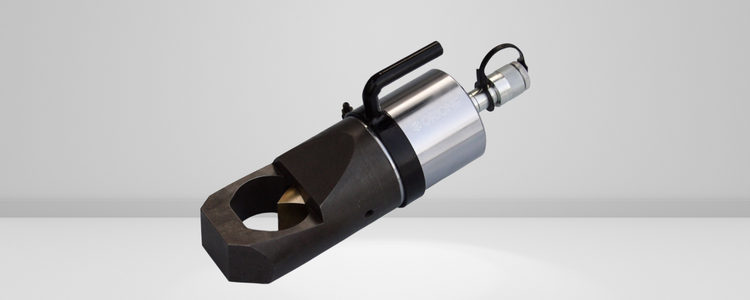
Range M6 - M48 / Max. Working Pressure 700 bar
| Model | Stud Diameter mm | Stud Diameter Inch | Nut A/F mm | Nut A/F Inch | Approx Wt. (kg) |
|---|---|---|---|---|---|
| ONSA-1018 | M6-M12 | 1/4”-3 /8” | 42295 | 1/2”- 11/16” | 1 |
| ONSA-1824 | M12-M16 | 3/8”- 9/16” | 18-24 | 11/16”- 15/16” | 2 |
| ONSA-2432 | M16-M22 | 9/16”- 3/4” | 24-32 | 15/16”- 11/4” | 3 |
| ONSA-3241 | M22-M27 | 3/4”- 1” | 32-41 | 115/16”- 15/8” | 4.5 |
| ONSA-4150 | M27-M33 | 1”- 11/4” | 41-50 | 15/8”- 2” | 9.6 |
| ONSA-5060 | M33-M39 | 11/4”- 11/2” | 50-60 | 2”- 23/8” | 13 |
| ONSA-6075 | M39-M48 | 11/2”- 17/8” | 60-75 | 23/8”- 215/16” | 34 |
| Model | Stud Diameter mm | Stud Diameter Inch | Nut A/F mm | Nut A/F Inch | Approx Wt. (kg) |
|---|---|---|---|---|---|
| ONSS-1636 | M10-M24 | 3/8” - 7/8” | 16-36 | 11/16” - 1 7/16” | 11 |
| ONSS-3651 | M22-M33 | 7/8” - 1 1/4” | 36-51 | 1 7/16” - 2” | 12 |
| ONSS-4660 | M30-M39 | 1 1/8” - 1 1/2” | 46-60 | 1 13/16” - 2 3/8” | 35 |
| ONSS-5770 | M36-M45 | 1 3/8” - 1 3/4” | 57-70 | 2 1/5” - 2 3/4” | 36 |
| ONSS-7089 | M45-M60 | 1 3/4” - 2 1/4” | 70-89 | 2 3/4” - 3 1/2” | 78 |
| ONSS-7998 | M52-M68 | 2” - 2 1/2” | 79-98 | 3 1/8” - 3 7/8” | 79 |
| ONSS-95108 | M64-M72 | 2 1/2” - 2 3/4” | 95-108 | 3 7/8” - 4 1/4” | 123 |
| ONSS-114127 | M72-M80 | 2 3/4” - 3 1/4” | 114-127 | 4 1/4” - 5” | 135 |
| ONSS-124136 | M80-M90 | 3 1/4” - 3 1/2” | 124-136 | 5” - 5 1/4” | 138 |
| Model | Stud Diameter mm | Stud Diameter Inch | Nut A/F mm | Nut A/F Inch | Approx Wt. (kg) |
|---|---|---|---|---|---|
| ONSS-1636 | M10-M24 | 3/8” - 7/8” | 16-36 | 11/16” - 1 7/16” | 11 |
| ONSS-3651 | M22-M33 | 7/8” - 1 1/4” | 36-51 | 1 7/16” - 2” | 12 |
| ONSS-4660 | M30-M39 | 1 1/8” - 1 1/2” | 46-60 | 1 13/16” - 2 3/8” | 35 |
| ONSS-5770 | M36-M45 | 1 3/8” - 1 3/4” | 57-70 | 2 1/5” - 2 3/4” | 36 |
| ONSS-7089 | M45-M60 | 1 3/4” - 2 1/4” | 70-89 | 2 3/4” - 3 1/2” | 78 |
| ONSS-7998 | M52-M68 | 2” - 2 1/2” | 79-98 | 3 1/8” - 3 7/8” | 79 |
| ONSS-95108 | M64-M72 | 2 1/2” - 2 3/4” | 95-108 | 3 7/8” - 4 1/4” | 123 |
| ONSS-114127 | M72-M80 | 2 3/4” - 3 1/4” | 114-127 | 4 1/4” - 5” | 135 |
| ONSS-124136 | M80-M90 | 3 1/4” - 3 1/2” | 124-136 | 5” - 5 1/4” | 138 |

